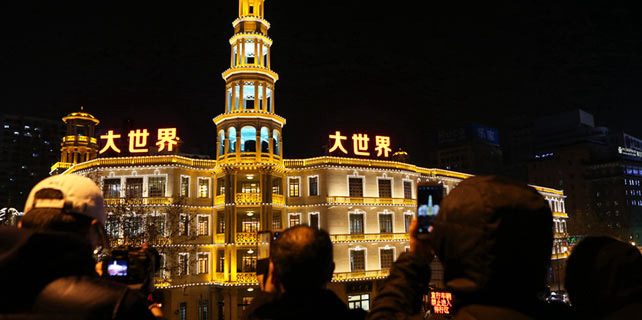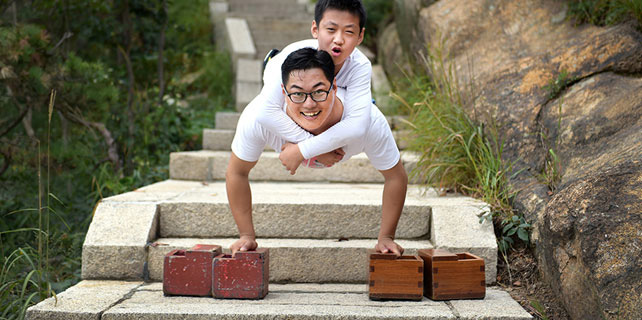Lululemon poised to go all-out in China
|
|
|
Laurent Potdevin, CEO of Lululemon Provided to China Daily |
Athletic apparel brand Lululemon wants to achieve growth in China at the fast and fluid pace of power yoga, said its CEO Laurent Potdevin, and it has demonstrated this by opening not just one but three stores in the country in the span of a week.
Lululemon made its first pair of pants back in 1998 when yoga was still in a nascent stage in North America. The brand has since been considered a driving force for yoga across the United States.
The Canadian brand first entered China with a showroom in Shanghai three years ago and Potdevin said that the delay in opening its first store was down to ensuring that the company was well-prepared for the Chinese market.
“What we want is sustainable growth for China. However, sustainable doesn’t mean slow. When I joined Lululemon three years ago, there was no such thing as international strategy, which is one of the things I am most excited about,” said Potdevin in mid-December during the opening of the brand’s first store in the Chinese mainland.
“Building international presence takes time. We build community and energy before building stores. The past few years allowed us to really understand and connect with the local community. Once you have that kind of the momentum, you know it’s time,” he added.
An example of how the brand has gone about connecting with the Chinese community can be seen in the yoga event held earlier in August where Lululemon’s brand ambassador used video chat app Skype to lead a yoga workout involving 3,500 people in Shanghai, Beijing, and Chengdu. The event was the largest in the company’s history.
Each of Lululemon’s stores in China — two in Shanghai and one in Beijing — span around 200 square meters and are situated in prime locations. More than 90 percent of the products offered at its global outlets can be found at the China stores, indicating that the company does not see a gap between Chinese consumers and their international peers.
According to the company, more shops will be opened in China in 2017, including up to three in Shanghai.
But while the physical shops have only just opened, Lululemon products were already available in China in 2015 via its flagship store on Tmall, China’s largest online shopping platform by Alibaba.
During the Singles’ Day shopping festival on Nov 11 this year, Lululemon received more than 10,000 orders within 24 hours, making it one of the fastest-growing brands in Tmall’s sportswear segment.
Since the launch of its Tmall store, the company has seen a 50 percent quarter-on-quarter growth in sales, and according to its China office, the transactions on Tmall are 20 to 30 percent higher than the average expenditure of its customers.
“The digital landscape in China is changing very quickly. We don’t have to be in every mall to be successful,” said Potdevin.
“I was really impressed by the amount of experiences WeChat alone offers, such as paying for a cab or a meal. It can also function like Instagram or create stickers. It’s an incredible app but the rest of the world just think it’s just another messaging app. So, as a company, we really appreciate the opportunities here in China to tailor our digital strategies which might later be applied globally,” he added.
According to Lululemon’s five-year plan, the brand is expected to grow from a 2.5-billion-dollar company to a 4-billion-dollar one by 2020, with the Asia Pacific region contributing up to a quarter of its revenue. China is expected be a big driver in the region.
Research firm Euromonitor International estimated that China’s athleisure market reached a size of $25.3 billion in 2015 and is expected to grow to $43.1 billion by 2020, surpassing the luxury goods market.
Other major athletic brands are also eyeing a piece of the market. Adidas, for example, said it would add another 3,000 more stores in China, bringing its total to 12,000 in the next five years. American sportswear brand Under Armour has also said that it is aiming to increase its sales in China by 25 percent per year until 2018.
Potdevin, however, is unfazed by the competition.
“I always think of it this way: we either have lots of competitors, or we have no competitors, because we are so uniquely positioned at the intersection of fashion and function. As long as we focus on innovation, I believe we will continue to lead the market,” said Potdevin.
In previous interviews, Potdevin was quoted as saying that the athleisure market is a huge bubble waiting to burst. However, he believes that Lululemon’s future will not be affected by this.
“I think athleisure is a trend but being athletic and mindful is more than a trend — it’s a lifestyle that more people are trying to get into. The trend is irrelevant to us,” said Potdevin.

















